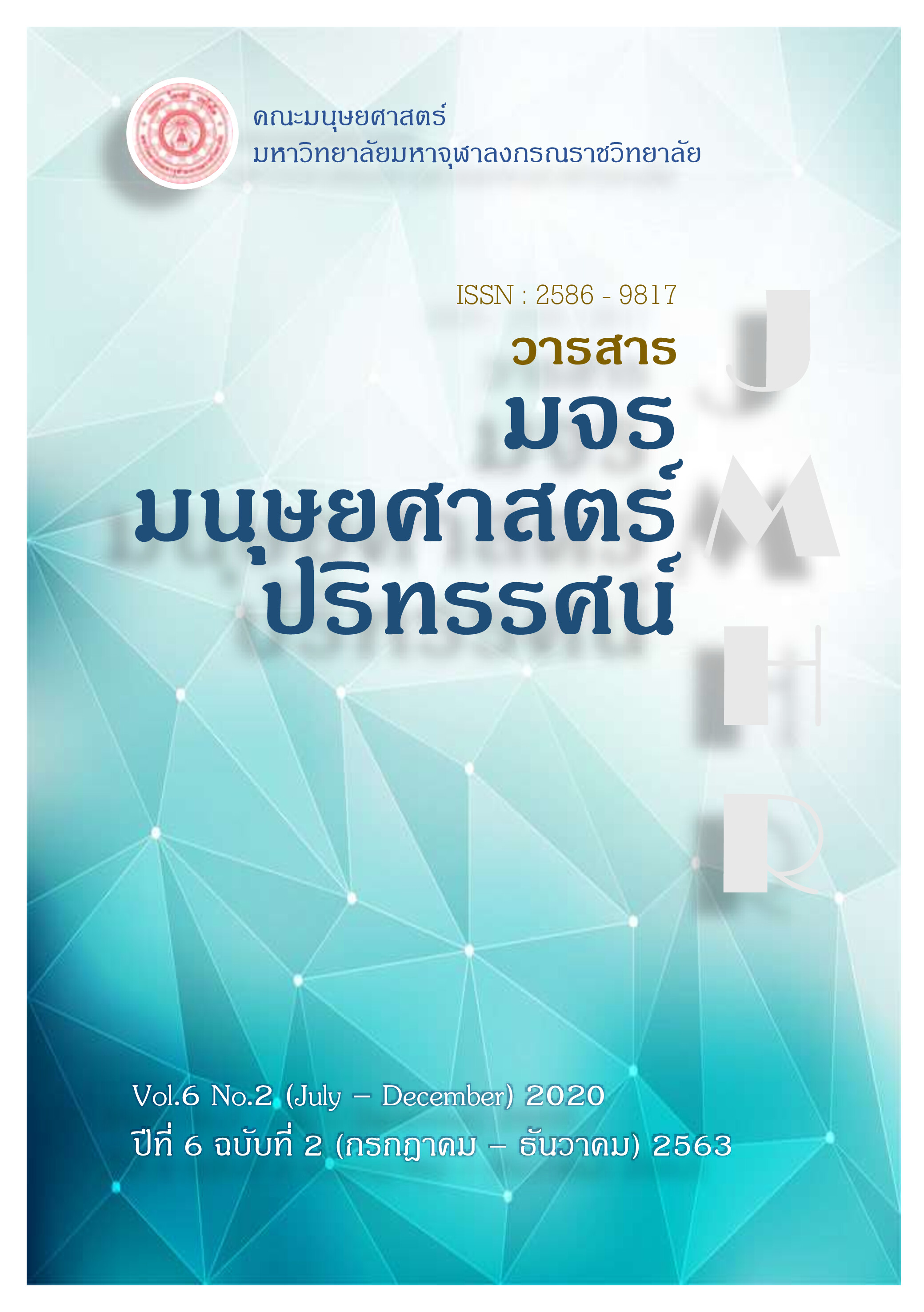ความสัมพันธ์ระหว่างภาษากับภาพตัวแทนผู้เรียนอาชีวศึกษาในหนังสือพิมพ์รายวันภาษาไทย
คำสำคัญ:
ผู้เรียนอาชีวศึกษา, ภาพตัวแทน, วาทกรรมวิเคราะห์เชิงวิพากษ์, กลวิธีทางภาษาบทคัดย่อ
บทความนี้มีวัตถุประสงค์เพื่อวิเคราะห์ภาพตัวแทนของผู้เรียนอาชีวศึกษาที่ประกอบสร้างผ่านกลวิธีทางภาษาในหนังสือพิมพ์รายวันภาษาไทย และวิเคราะห์วิถีปฏิบัติทางวาทกรรมและวิถีปฏิบัติทางสังคมวัฒนธรรมที่สัมพันธ์กับการประกอบสร้างภาพตัวแทน ผู้วิจัยเก็บข้อมูลจากหนังสือพิมพ์รายวันภาษาไทย 3 ชื่อฉบับ ได้แก่ ไทยรัฐ เดลินิวส์ และมติชน ตั้งแต่ 1 มกราคม 2555 ถึง 31 ธันวาคม 2561 จำนวน 1,118 ตัวบท และใช้แนวคิดวาทกรรมวิเคราะห์เชิงวิพากษ์ (CDA) เป็นกรอบในการศึกษา
ผลการศึกษาพบกลวิธีทางภาษาที่ประกอบสร้างภาพตัวแทนผู้เรียนอาชีวศึกษา ได้แก่ การเลือกใช้คำศัพท์ การใช้อุปลักษณ์ การใช้ทัศนภาวะ การใช้สหบท การใช้มูลบท การปฏิเสธมูลบท และการใช้ประโยคแสดงความขัดแย้ง กลวิธีทางภาษาดังกล่าวประกอบสร้างภาพตัวแทนผู้เรียนอาชีวศึกษาทั้งด้านลบและด้านบวก ข้อค้นพบที่สำคัญคือการนำเสนอภาพตัวแทนด้านลบมักปรากฏในพื้นที่ข่าวหน้าหนึ่งซึ่งมีความโดดเด่นและเข้าถึงได้ง่าย บางส่วนเป็นการนำเสนอในลักษณะเหมารวมและเพิ่มน้ำหนัก ส่วนภาพตัวแทนด้านบวกมักจะปรากฏในข่าวและบทความทางการศึกษาซึ่งเข้าถึงได้น้อยกว่า ยิ่งไปกว่านั้นบางครั้งอาจจะมีการสื่อทัศนคติด้านลบโดยที่ผู้เขียนอาจไม่ได้ตั้งใจ การนำเสนอภาพตัวแทนในลักษณะดังกล่าวนี้ น่าจะส่งผลกระทบต่อทัศนคติของคนในสังคมที่มีต่อการเรียนอาชีวศึกษาและอาจเป็นอุปสรรคต่อการส่งเสริมการเรียนอาชีวศึกษาตามนโยบายภาครัฐ
เอกสารอ้างอิง
เกรียงศักดิ์ เจริญวงศ์ศักดิ์. (2547). วิสัยทัศน์การอาชีวศึกษาใน 5 ปีข้างหน้า. วารสารวิทยาการ จัดการปริทัศน์, 7(7), 71-77.
ณัฐพร พานโพธิ์ทอง. (2556). วาทกรรมวิเคราะห์เชิงวิพากษ์ตามแนวภาษาศาสตร์ แนวคิดและการนำมาศึกษาวาทกรรมในภาษาไทย. กรุงเทพฯ: โครงการเผยแพร่ผลงาน วิชาการ คณะอักษรศาสตร์ จุฬาลงกรณ์มหาวิทยาลัย.
ธีระยุทธ สุริยะ. (2554). ความสัมพันธ์ระหว่างกลวิธีทางภาษากับภาพตัวแทนนักโทษประหารและการประหารชีวิตในหนังสือพิมพ์รายวันภาษาไทย (วิทยานิพนธ์ปริญญามหาบัณฑิต สาขาวิชาภาษาไทย). จุฬาลงกรณ์มหาวิทยาลัย. กรุงเทพฯ.
นครินทร์ สำเภาพล. (2563). ความสัมพันธ์ระหว่างกลวิธีทางภาษากับภาพตัวแทนบุคคลพ้นโทษในวาทกรรมสนับสนุนบุคคลพ้นโทษในหนังสือพิมพ์รายวันภาษาไทย. วารสารวรรณวิทัศน์, 20(1), 37-86.
ปรัชญา นิลสุข. (2558). อาชีวศึกษากับประเทศไทย4.0. วารสารอาชีวะก้าวไกล, 1(4), 6-7.
___________. (2560). อาชีวศึกษากับประเทศไทย4.0. วารสารอาชีวะก้าวไกล, 3(2), 8-9.
ภักดี รัตนมุขย์. (2561). THAILAND 4.0 ตอบโจทย์ประเทศไทย?. กรุงเทพฯ: สำนักพิมพ์ปัญญาชน.
ศิริพร ภักดีผาสุข. (2561). ความสัมพันธ์ระหว่างภาษากับอัตลักษณ์และแนวทางการนำมาศึกษาภาษาไทย. กรุงเทพฯ: สำนักพิมพ์แห่งจุฬาลงกรณ์มหาวิทยาลัย.
Fairclough, N.(1992). Discourse and Social Change. Cambridge: Polity Press.
Fairclough, N. (1995a). Critical Discourse Analysis: The Critical Study of Language. London: Longman.
Fairclough, N. (1995b). Media discourse. London: Edward Arnold.
Lakoff, G. and Johnson, M. (1980). Metaphors We Live By. Chicago: Chicago University Press.
Machin, D., & Mayr, A. (2012). How to do critical discourse analysis : a multimodal introduction.






